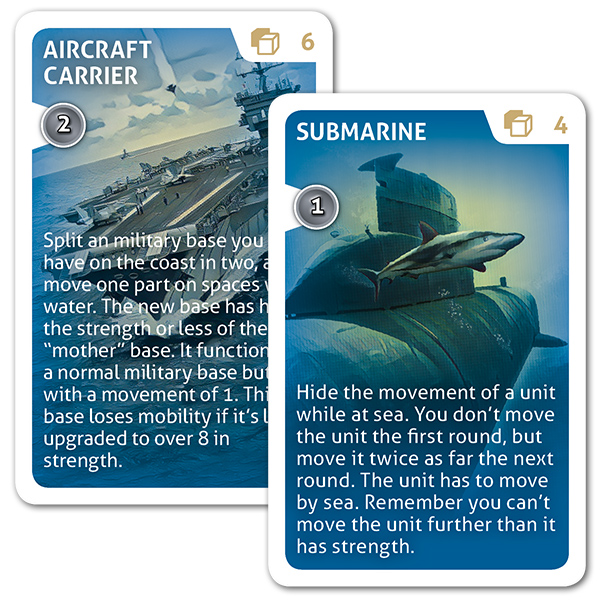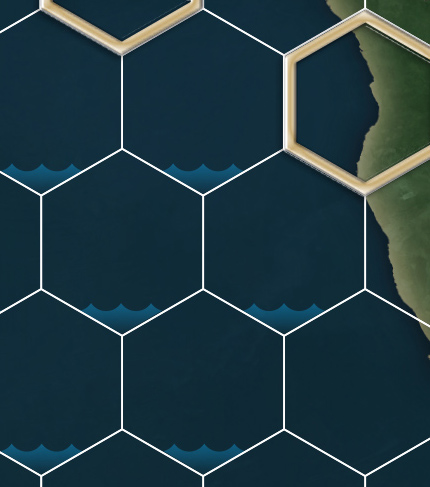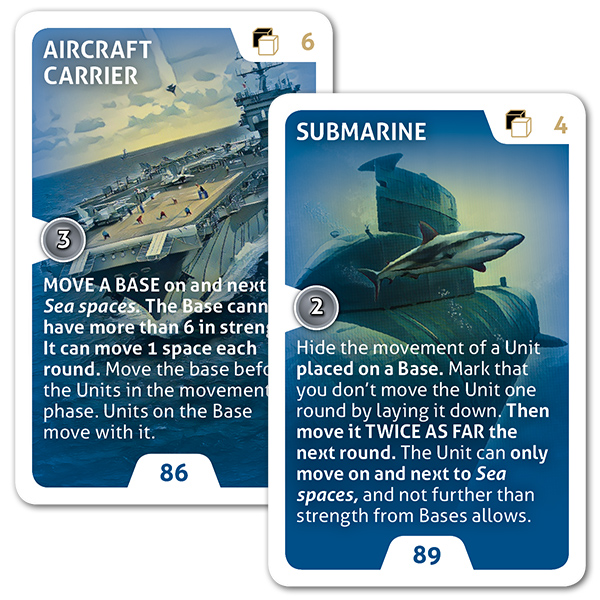Designing games are all about problem solving. You constantly make up problems that needs to be solved!
I like to show some typically problems that needed to be solved during the design of World Dumbination. If you don’t know anything of the game please take a quick peak at the main web pages to get an overview of the game!
I haven’t met very big problems on this game, and most issues have been solved in just an hour or two. But I have other games lying around that I needs quite the effort to solve a problem that has stopped the whole design process. All problems should be solvable, but it just takes a lot of time sometimes.
I will use two cards in the game as example in this article. Since this is a war game I just had to have Aircraft Carrier and Submarine in the game. In the beginning I just made them as blue project cards that gave you some victory points, not thinking too much about how they would work.

When I got to thinking about their ability my first idea for the Aircraft Carrier card was a bit too complex. In the game there is base tokens with different strength. These bases gives strength to the units that are the pieces players moved on the game board. I thought it would be fun to split a base by the sea in two to make the weaker one a moving base, as an Aircraft Carrier. During play testing this ability almost never got used, and the card was very unpopular even though it gave 2 victory points. It was also a problem with the splitting of the base if a player didn’t have any weaker base tokens left. It was luckily very easy to simplify this so I changed the ability to make the base itself move 1 space in a round. The base had to have 6 or less in strength and could only move by sea. This made it understandable for everyone, but it still quite complex to put in as a strategy for most players. The movements on the board as it is are enough for first time players, but this can give many possibilities for more experienced players.
For the Submarine I made the ability of the card to lay down a unit on the board and not move it in a round, then move it twice as far the next round. Off course to simulate the hidden movement of a Submarine. But this and the solution for the Aircraft Carrier card started some new issues:
1 Which spaces are sea spaces on the game board?
2 If a Submarine unit was laid down and the space got attacked, was the unit there or not? A player could lay down the unit just to put it up again on the same place, so the unit had dived, but no one would actually know where it was. And should the player be able to move the unit away if it wasn’t on the space?
3 If a Submarine unit or an Air craft carrier base was attacked and removed, should the cards also be removed?
4 And more important, if the Aircraft Carrier and Submarine cards got attacked what should happen with the base and unit that used the ability of the cards?
This is the solutions I came up with:

1 In the beginning I had marked spaces that had islands, because on islands you could build bases. I found out it was much better to just mark sea spaces, where it wasn’t possible to build bases. I then made the text on the cards pointing out that the Air craft bases and Submarine units could only move ON AND NEXT TO sea spaces. That made them able to reach coast to coast.
2 The issue with the unit being on a space or not I sort of fixed with making units only use the submarine ability when placed on a base. This made it harder to attack the space and more fair, not being able to block spaces with the unit. The opponents units had to be stronger than both the unit and the base to attack. If the space was attacked the player with the Submarine unit could say it was not on the space and move it away from the base. You can say the unit got spotted when the space it dived from was attacked, so it could move away from the base just as a normal unit. It made the Submarine unit able to be on two places at the same time, but that is okay when it works this way.
3 & 4 When attacked I let the cards and the pieces on the board be independent of each other, so I added that in the rules. If a base using an Aircraft Carrier card suddenly is stuck on a sea space it doesn’t matter even though it says in the rules it’s not allowed with bases on those spaces.
When a Submarine card get attacked the Submarine unit will lose the hidden movement. The player can then choose to rise it up again on the same space or move it away as a normal unit as the card is removed.

But even tough some problems got fixed, new ones appear. What if a submarine unit has dived on an Aircraft carrier base that moves away from the space in the next round? Then the first problem arrives again, since the submarine unit is alone on a space. This will occur so rarely, that I will let it be. The space can be attacked as a normal space with a unit, and the unit can move away when attacked. As the aircraft base is next to it, the possibility that anyone attacks the space is low. But this shows how a problem doesn’t just disappear, but hangs around even though you think you solved it!
These things are the most complex parts in the game, and it could be a ground for discussion during the game. But reading the rules and the cards carefully should make things clear. I also have plans to make a 6 page card folder as a Kickstarter stretch goal, just to help players quickly sort out these types of issues in the game.
So there are a lot to think about making a game like World Dumbination. This was just two cards of 55 unique cards. So it is a lot of work having control of everything!
